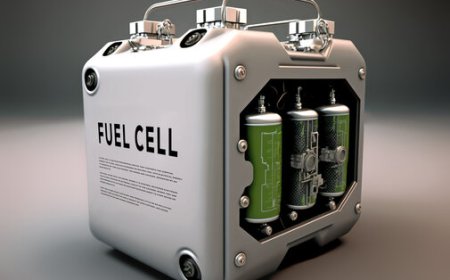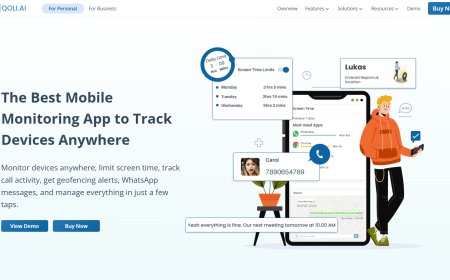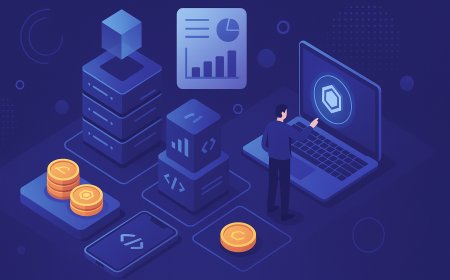How Is AI Being Used to Forecast Transportation Demand in Urban Areas
In this blog, we explore how AI is redefining transportation planning in urban areas by providing more accurate demand forecasts.

Urban mobility is undergoing a massive transformation driven by rapid population growth, technological evolution, and the pressing need for sustainable transport solutions. Among the most game-changing technologies shaping the future of urban transit is Artificial Intelligence (AI). From traffic signal optimization to smart public transit systems, AI is proving to be a powerful tool in solving one of the most complex problems of modern cities: forecasting transportation demand.
In this blog, we explore how AI is redefining transportation planning in urban areas by providing more accurate demand forecasts, enabling real-time responsiveness, and helping cities prepare for future challenges.
Understanding Transportation Demand in Urban Contexts
What Is Transportation Demand Forecasting?
Transportation demand forecasting involves predicting future travel patterns based on various data sources like population trends, land use, economic activity, and infrastructure development. Traditionally, this has been achieved through mathematical modeling techniques, which, while useful, often lack the adaptability and precision that AI can provide.
Why It Matters in Urban Areas
Urban areas are constantly evolving ecosystems. Transportation demand is influenced by a variety of dynamic factorsranging from weather conditions and special events to real-time road incidents and economic fluctuations. Therefore, relying solely on historical trends and static models is no longer sufficient for city planners.
The Role of AI in Forecasting Urban Transportation Demand
Data-Driven Decision Making
AI systems thrive on data. With the explosion of big datacollected from GPS systems, smartphones, IoT devices, and traffic camerasAI can process and learn from vast data sets at unprecedented speeds. This enables more granular insights into how people move within cities.
Machine Learning Models
Machine Learning (ML), a subset of AI, can analyze millions of data points to identify patterns and correlations invisible to human analysts. For example, ML models can detect how specific weather conditions impact subway usage or how upcoming holidays influence traffic congestion.
These insights help urban planners and transportation authorities create adaptive models that forecast demand not just for the coming weeks or months but potentially for the next few hours with high accuracy.
Applications of AI in Urban Transportation Forecasting
1. Dynamic Traffic Management
AI-powered systems can predict peak traffic hours and suggest adaptive signal timings to ease congestion. Google Maps and other navigation apps already use similar techniques to suggest optimal routes based on live traffic conditions. In cities like Los Angeles and Singapore, AI-enabled platforms have significantly reduced traffic jams and travel time.
2. Public Transit Optimization
AI models can forecast passenger loads on buses and trains, helping transit authorities optimize fleet deployment and scheduling. This prevents overcrowding, reduces wait times, and enhances the commuter experience.
For instance, Transport for London (TfL) has been experimenting with AI to forecast ridership patterns, which allows them to deploy resources more efficiently during high-demand periods.
3. Ride-Sharing and On-Demand Services
Companies like Uber and Lyft use AI to anticipate rider demand in various parts of a city. AI algorithms consider past trip data, weather, local events, and even social media activity to predict where and when demand will spike. This allows them to pre-position drivers and reduce passenger wait times.
A custom AI development company often builds these specialized predictive models tailored to the unique demands of ride-sharing businesses.
4. Infrastructure Planning
AI can simulate various urban development scenariossuch as new residential areas or commercial hubsand predict how these changes will affect transportation demand. This helps city planners make more informed decisions on where to build roads, bike lanes, or public transport hubs.
5. Smart Parking Systems
AI-powered parking solutions forecast demand and availability, helping drivers find parking faster and reducing traffic caused by vehicles circling in search of spots. Predictive analytics also allow cities to implement dynamic pricing based on peak usage.
Key Technologies Enabling AI Forecasting
1. Internet of Things (IoT)
Connected sensors and devices collect real-time data from roads, traffic signals, and public transit vehicles. This real-time information is crucial for training AI models.
2. Cloud Computing
With large volumes of data to analyze, cloud platforms offer scalable computing resources that allow for fast and complex AI computations.
3. Natural Language Processing (NLP)
NLP allows AI to analyze unstructured data from sources like traffic reports, social media, and customer feedback. This helps create a more comprehensive picture of transportation demand.
An AI based chatbot development company might leverage NLP to build systems that gather user input on travel behavior, service satisfaction, and crowd-sourced congestion reportsfeeding into AI models for better forecasting.
Benefits of AI in Urban Transportation Forecasting
1. Improved Accuracy
Unlike traditional models that rely on static inputs, AI continuously learns and adapts from new data, improving its forecasting accuracy over time.
2. Real-Time Adaptability
AI can adjust forecasts and recommendations based on real-time events like accidents, protests, or severe weather, allowing authorities to respond proactively.
3. Enhanced Efficiency
Better demand forecasting leads to optimized resource allocation, reduced operational costs, and a more sustainable transport network.
4. Environmental Impact
By predicting and managing demand more effectively, AI helps reduce traffic congestion and greenhouse gas emissions, contributing to more sustainable urban living.
Challenges and Limitations
1. Data Privacy and Security
Collecting and analyzing transportation data at a large scale raises concerns about privacy. Strict regulations and ethical frameworks are needed to govern data usage.
2. Data Quality and Integration
AI models require high-quality, integrated data from various sources. In many cities, transportation data is siloed or outdated, which can hinder AI implementation.
3. Cost of Implementation
Deploying AI infrastructurehardware, software, and talentcan be costly, especially for smaller cities. However, partnerships with private tech firms are helping bridge this gap.
4. Transparency and Accountability
AI models are often seen as "black boxes," making it difficult to understand how certain decisions are made. Transparent algorithms and explainable AI models are crucial for building trust among stakeholders.
The Future of AI in Urban Transportation
The next phase in AI-driven transportation forecasting will likely involve even more integration with autonomous vehicles, drone delivery systems, and multimodal transport platforms. Cities will increasingly adopt digital twinsvirtual replicas of urban environmentsto simulate changes and make proactive decisions about infrastructure and mobility.
Incorporating citizen feedback through AI-based interfaces, such as chatbots and digital assistants, will also become more prevalent. These systems will not only provide information but also gather valuable input from users to fine-tune transport models.
Real-World Examples of AI in Action
Singapore
Singapores Land Transport Authority uses AI to simulate future mobility scenarios and optimize transportation policy. Their systems integrate real-time traffic data with land use planning tools.
Helsinki
The Finnish capital uses AI to promote "Mobility as a Service" (MaaS), where users plan and pay for all their transport needs through a single platform. AI forecasts demand to manage service delivery efficiently.
San Francisco
With its high concentration of tech startups and innovation hubs, San Francisco is piloting AI models that predict ride-share demand, manage curb space, and even monitor pedestrian flow.
Conclusion
AI is no longer a futuristic add-on but a foundational technology in urban transportation planning. Its ability to analyze vast datasets, predict trends, and adapt to real-time variables makes it an essential tool for modern cities. From dynamic traffic control and public transit optimization to infrastructure planning and ride-sharing efficiency, AI's applications are vast and growing.
Urban planners, transit authorities, and private mobility companies that embrace AI-driven forecasting stand to benefit immenselyfrom reduced congestion and operational costs to improved commuter satisfaction and environmental impact.
By addressing the existing challenges of data quality, privacy, and transparency, cities can unlock the full potential of AI and create smarter, more responsive, and more sustainable transportation systems for future generations.




























